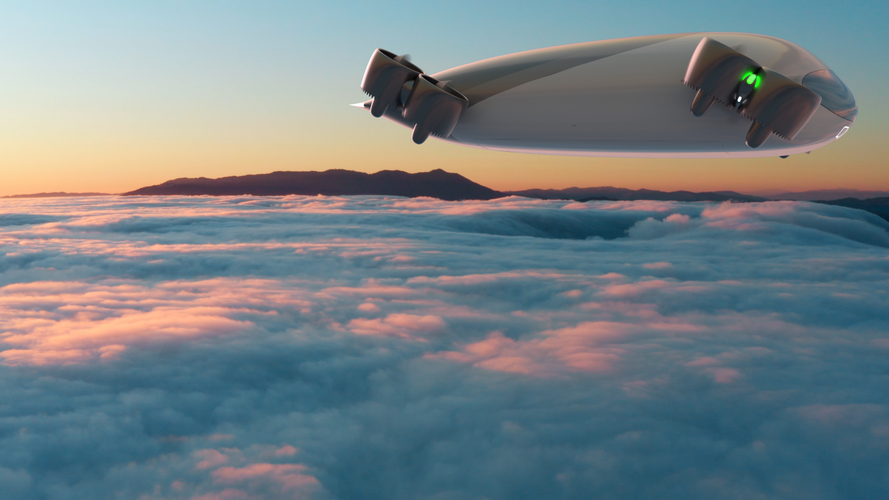You are using an out of date browser. It may not display this or other websites correctly.
You should upgrade or use an alternative browser.
You should upgrade or use an alternative browser.
VTOL On Demand Mobility
- Thread starter Grey Havoc
- Start date
alberchico
I really should change my personal text
- Joined
- 14 January 2014
- Messages
- 707
- Reaction score
- 1,513
This is a very informative discussion of the electric aircraft/ UAM market. Well worth the watch.
shin_getter
ACCESS: Top Secret
- Joined
- 1 June 2019
- Messages
- 1,109
- Reaction score
- 1,492
alberchico
I really should change my personal text
- Joined
- 14 January 2014
- Messages
- 707
- Reaction score
- 1,513
This is the first time I've seen a comprehensive video of one of these evtol's undergoing a test flight. Kind of irritating that they always play some music over the footage and never let us hear the noise level of the engines.
dannydale
ACCESS: Top Secret
- Joined
- 13 May 2007
- Messages
- 545
- Reaction score
- 410
Man the harpoons! THAR BE WHALES!View attachment 659496
GO Big, or Go Home! I'll see your punny 4-7 person eVTOL and raise you 40!
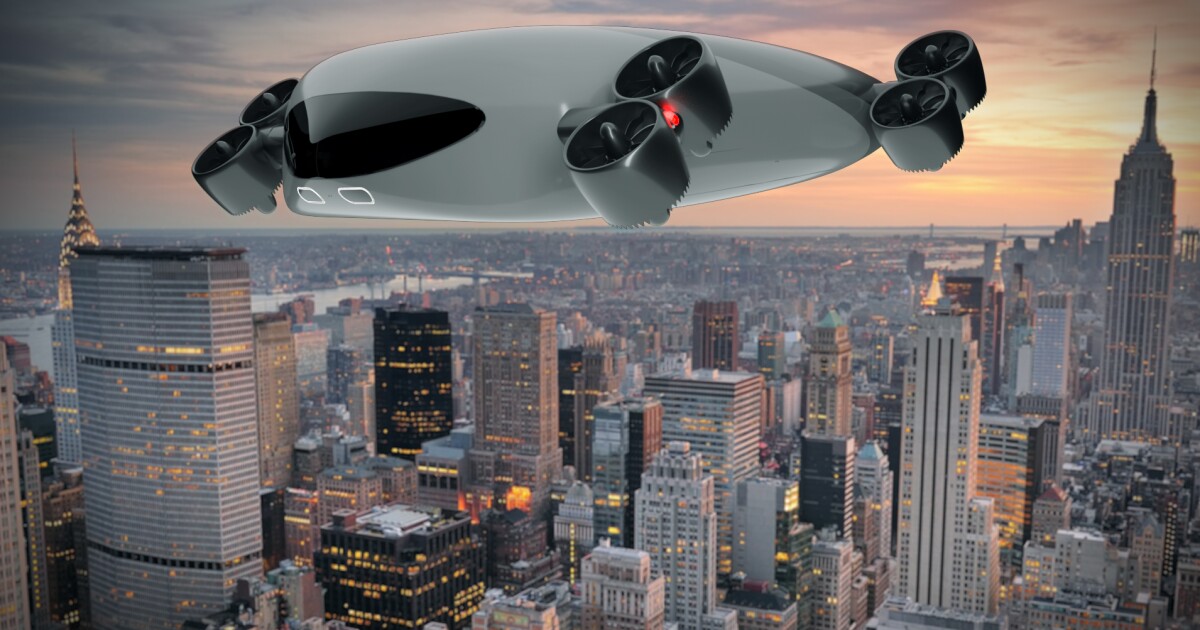
Flying bus: Braeden Kelekona elaborates on his staggering 40-seat eVTOL
eVTOLS, or electric vertical takeoff and landing aircraft, are a hot topic at the moment. Dozens, even hundreds of companies are working at fever pitch to create the new class of clean, quiet, cheap air taxi that many believe will fundamentally transform our cities in the coming decades. You could…newatlas.com
- Joined
- 27 May 2008
- Messages
- 1,179
- Reaction score
- 2,485
When the range equation is explained there’s no consideration given to a climb fraction. Gaining altitude is a fundamental part of an aircraft operation, and the energy is more or less lost (regeneration recovery on descending are really poor). Even a modest climb will take a massive chunk out of the range;- 1000m (3000ft ish) will nearly half the available range. Obstacle clearance, basic low flying legal requirements, deconfliction, low level turbulence, noise abatement, minimising visual intrusion (the cause of 25% of low flying complaints in London) all drive the need gain altitude.
Also the range doesn’t include meto factors such as headwind, and/or icing which if you’re offering a scheduled service needs to consider the worst possible.
Hence an 80 mile, 2D ideal range could drop to a 20-30 miles real world range typically flights of about 12-15minutes. Under such real world unpleasantness, the 15% reserve turns into 5-10 minutes flying. With these short ranges inherently other unavoidable practical issues appear;- such as you need a vacant charger at your landing site. The charger itself needs to provide a lot of juice and bunch of them will need a fair diameter of copper cable for supply. Furthermore if a landing location becomes blocked, say due to a incident, maybe a pax heart attack, where do all those inbound go? Top of building landing is banned in New York due to historical accidents? Remember they’ve only singular minutes to sort this out? This makes the notion of a large, on demand service somewhere between extremely difficult and impossible
Apologies for the truth hammer tap.
Last edited:
- Joined
- 4 May 2008
- Messages
- 2,439
- Reaction score
- 762
@Zoo Tycoon How dare you inject reality into this conversation, Sir! 
- Joined
- 11 February 2007
- Messages
- 2,569
- Reaction score
- 4,382
When the range equation is explained there’s no consideration given to a climb fraction. Gaining altitude is a fundamental part of an aircraft operation, and the energy is more or less lost (regeneration recovery on descending are really poor). Even a modest climb will take a massive chunk out of the range;- 1000m (3000ft ish) will nearly half the available range.
I suspect a lot of these outfits are going to push for the absolute minimum climb possible, enough to get them above power wires and not a lot more. Attitudes to aviation rulemaking were why Uber as a designer/operator particularly worried me, and I'm not sure the sector as a whole is markedly better.
- Joined
- 11 February 2007
- Messages
- 2,569
- Reaction score
- 4,382

Flying cars will be a reality by 2030, says Hyundai’s Europe chief
Michael Cole says urban air mobility could free up congestion and help with emissions in cities
Well, the car guys have deeper pockets, and a safety culture of sorts, but I'm not convinced they actually understand what they're buying themselves into.
- Joined
- 9 October 2009
- Messages
- 21,976
- Reaction score
- 13,636
- Joined
- 27 May 2008
- Messages
- 1,179
- Reaction score
- 2,485
When the range equation is explained there’s no consideration given to a climb fraction. Gaining altitude is a fundamental part of an aircraft operation.
I suspect a lot of these outfits are going to push for the absolute minimum climb possible, enough to get them above power wires and not a lot more. Attitudes to aviation rulemaking were why Uber as a designer/operator particularly worried me, and I'm not sure the sector as a whole is markedly better.
I suspect you’re right;- It always amusing that their CGI shows perfect blue sky weather. The everyday ultra low level environment is real nasty in terms of turbulence, hence vibration/shock. This will not only be deeply unpleasant for the pax, it will be rough on the components. In fact a lot of the claimed reliability improvement will be more than lost to the sustained hammering. Another thought is the adequacy of existing components design and qualifications standards which were never intended to cover such extremes. I wonder how robust this new industry will be to loss of life especially in its early operation?
alberchico
I really should change my personal text
- Joined
- 14 January 2014
- Messages
- 707
- Reaction score
- 1,513
I do wonder how robust these evtols will be under the intensive flight schedules that they are expected to undertake everyday. For example look at this concept by Bell. They understand how rugged these electric helicopters really need to be and you can see that in their design, especially the rotors.When the range equation is explained there’s no consideration given to a climb fraction. Gaining altitude is a fundamental part of an aircraft operation.
I suspect a lot of these outfits are going to push for the absolute minimum climb possible, enough to get them above power wires and not a lot more. Attitudes to aviation rulemaking were why Uber as a designer/operator particularly worried me, and I'm not sure the sector as a whole is markedly better.
I suspect you’re right;- It always amusing that their CGI shows perfect blue sky weather. The everyday ultra low level environment is real nasty in terms of turbulence, hence vibration/shock. This will not only be deeply unpleasant for the pax, it will be rough on the components. In fact a lot of the claimed reliability improvement will be more than lost to the sustained hammering. Another thought is the adequacy of existing components design and qualifications standards which were never intended to cover such extremes. I wonder how robust this new industry will be to loss of life especially in its early operation?
You also have an experienced company like Karem, and their concept also looks like something that was designed with real world needs in mind.
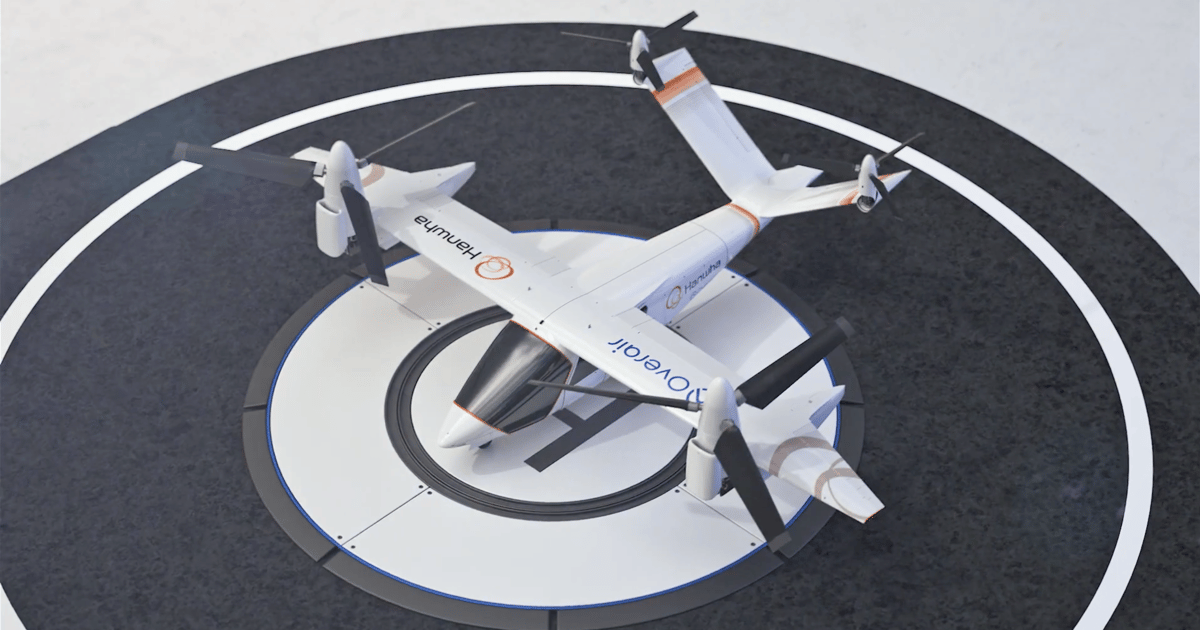
Overair Butterfly takes a unique eVTOL approach with military heritage
This month's update sees two new entries into the ranks of the AAM Reality Index, which attempts to quantify just how close an eVTOL company is to bringing its designs out of the render engines and into commercial service. The first, with a score of 4.4, is Jaunt Air Mobility with its big electric…
Last edited:
- Joined
- 11 February 2007
- Messages
- 2,569
- Reaction score
- 4,382
Very robust... They don't seem to care.
I couldn't find a like emoji for 'I don't know whether to laugh or cry'.
- Joined
- 18 October 2006
- Messages
- 4,211
- Reaction score
- 4,920
Abe Karem is certainly no stranger to having his work questioned. If you have not read Richard Whittle's book "Predator - The Secret Origins Of The Drone Revolution", I highly recommend it. The team working his eVTOL effort have a tremendous amount of time working efficiency in rotorcraft.
jmspeedfreak
ACCESS: Restricted
- Joined
- 23 September 2008
- Messages
- 32
- Reaction score
- 56
I
I'm in full agreement about the other factors but a few of the leading players are spending enough with enough good people that it isn't completely barmy to be attempting to do this. Whether it is every really likely in the next 20 years to be a mainstream transport medium is probably 50/50.
Separate point, but even if folks think this is incredibly poor judgement and a waste of investors money, bear in mind a single Automotive OEM car program is several Billion dollars so its not the end of the world.
I hope this isn't going to annoy anyone too much but by simple potential energy and L/D ratio calcs the energy for climb is definitely not half the range, at least not for an aircraft with a reasonably sensible battery, ie 50 to 60kW.hrs say. 3000m climb is 3000(m) x 1500(kg) x 9.81 = approx. 45Mj which is roughly 12kW.hrs, and the descent can be at reduced power (there is some transfer of potential to kinetic energy). 10:1 L/D gives drag of 1500N which is 100kW of power at 66m/s, so 50km = 75Mj = roughly 21kW.hrs, leaving 40% of the battery capacity unused for reserves, even assuming none of the reduced power descent benefit.
When the range equation is explained there’s no consideration given to a climb fraction. Gaining altitude is a fundamental part of an aircraft operation, and the energy is more or less lost (regeneration recovery on descending are really poor). Even a modest climb will take a massive chunk out of the range;- 1000m (3000ft ish) will nearly half the available range. Obstacle clearance, basic low flying legal requirements, deconfliction, low level turbulence, noise abatement, minimising visual intrusion (the cause of 25% of low flying complaints in London) all drive the need gain altitude.
Also the range doesn’t include meto factors such as headwind, and/or icing which if you’re offering a scheduled service needs to consider the worst possible.
Hence an 80 mile, 2D ideal range could drop to a 20-30 miles real world range typically flights of about 12-15minutes. Under such real world unpleasantness, the 15% reserve turns into 5-10 minutes flying. With these short ranges inherently other unavoidable practical issues appear;- such as you need a vacant charger at your landing site. The charger itself needs to provide a lot of juice and bunch of them will need a fair diameter of copper cable for supply. Furthermore if a landing location becomes blocked, say due to a incident, maybe a pax heart attack, where do all those inbound go? Top of building landing is banned in New York due to historical accidents? Remember they’ve only singular minutes to sort this out? This makes the notion of a large, on demand service somewhere between extremely difficult and impossible
Apologies for the truth hammer tap.
I'm in full agreement about the other factors but a few of the leading players are spending enough with enough good people that it isn't completely barmy to be attempting to do this. Whether it is every really likely in the next 20 years to be a mainstream transport medium is probably 50/50.
Separate point, but even if folks think this is incredibly poor judgement and a waste of investors money, bear in mind a single Automotive OEM car program is several Billion dollars so its not the end of the world.
- Joined
- 27 May 2008
- Messages
- 1,179
- Reaction score
- 2,485
I agree with your figures for a simple potential energy at altitude followed by a cruise. But it’s not including any efficiency loss (apart from LD) for either sector. Furthermore I reckon climb at high power and AOA (climb at high Cl) has much more loss than the simple equations indicate. Also in a controlled descent you can’t recover every last bit of energy into range. Normally in order to maintain a controlled glide path into a landing zone you’re required to increase drag by some means;- flap or airbrake or beta pitch. This is exacerbated by being pushed into control zones for deconfliction etc.
As I’ve mentioned earlier in this thread, I welcome the investors interest and funding but my concern is the due diligence. Some really good, if modest, schemes are being sidelined when investors are chasing graphic artist designs and incredibly ambitious projects. I remain unconvinced it will end well.
As I’ve mentioned earlier in this thread, I welcome the investors interest and funding but my concern is the due diligence. Some really good, if modest, schemes are being sidelined when investors are chasing graphic artist designs and incredibly ambitious projects. I remain unconvinced it will end well.
jmspeedfreak
ACCESS: Restricted
- Joined
- 23 September 2008
- Messages
- 32
- Reaction score
- 56
Climb angle is much smaller than I think you'd guess at least once above 1000ft. The main point would be that for the claimed intra-city flights the height changes are very significant part of the energy loss and for anything over 10km not so much. I think the energy conversion from height to range is better than you think except for low altitude in city flights where descent is probably more like helicopter operations and lossy.I agree with your figures for a simple potential energy at altitude followed by a cruise. But it’s not including any efficiency loss (apart from LD) for either sector. Furthermore I reckon climb at high power and AOA (climb at high Cl) has much more loss than the simple equations indicate. Also in a controlled descent you can’t recover every last bit of energy into range. Normally in order to maintain a controlled glide path into a landing zone you’re required to increase drag by some means;- flap or airbrake or beta pitch. This is exacerbated by being pushed into control zones for deconfliction etc.
As I’ve mentioned earlier in this thread, I welcome the investors interest and funding but my concern is the due diligence. Some really good, if modest, schemes are being sidelined when investors are chasing graphic artist designs and incredibly ambitious projects. I remain unconvinced it will end well.
For certain most of the concept CGI based offerings are a bad joke. They will end badly, but most will not get so far that the losses are really significant. Lillium is maybe a different kettle of fish but the claims on scale up of the ducted fan based propulsors versus aircraft size is an interesting take many are ignoring. For sure they have the highest disc loading in the race but I don't blame them for trying something different. For very little change in strategy/propulsive disc loading they could have much better figures so despite the very dubious battery figures they shouldn't be discounted out of hand. A lot is still happening in cell technology that could give them a strong market proposition in longer leg intercity hops.
alberchico
I really should change my personal text
- Joined
- 14 January 2014
- Messages
- 707
- Reaction score
- 1,513
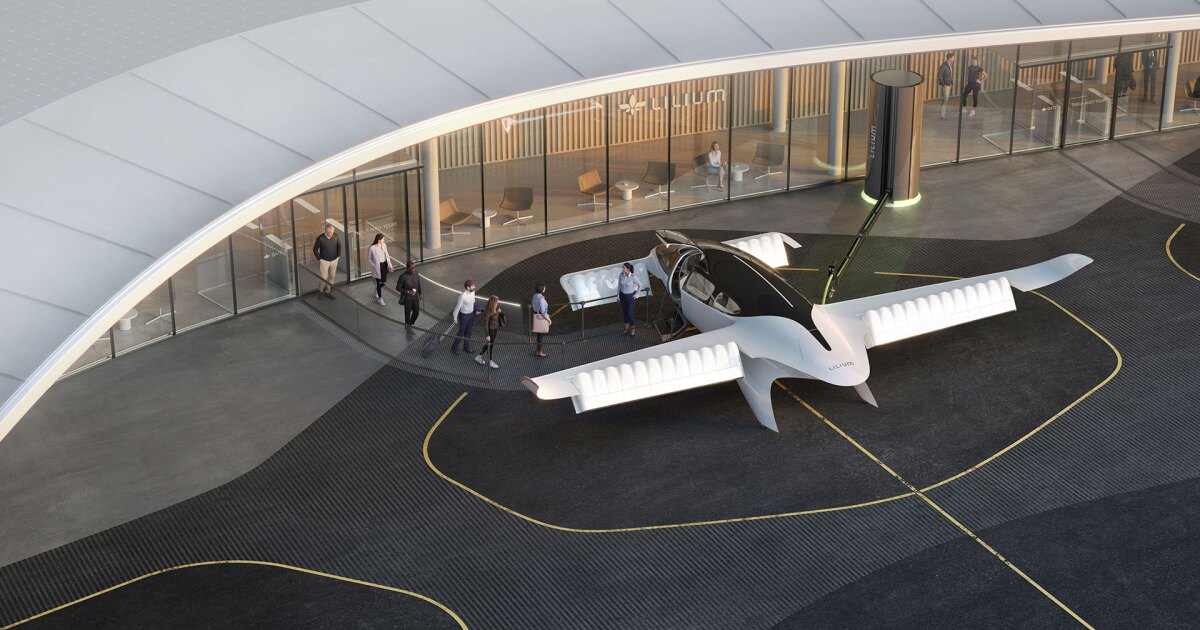
Lilium’s CPO on the massively expensive challenge of eVTOL certification
There's a billion-dollar elephant in the room; any startup that wants to bring an eVTOL air taxi into commercial service needs to structure its entire operation to meet the same aerospace standards Boeing does. Does anyone have the money?
This article gives a good overview of the challenges facing certification.
- Joined
- 11 February 2007
- Messages
- 2,569
- Reaction score
- 4,382

Lilium’s CPO on the massively expensive challenge of eVTOL certification
There's a billion-dollar elephant in the room; any startup that wants to bring an eVTOL air taxi into commercial service needs to structure its entire operation to meet the same aerospace standards Boeing does. Does anyone have the money?newatlas.com
This article gives a good overview of the challenges facing certification.
Yemsi sounds like he's being sensible about this, and he has the background to know the process inside out, which is not something I've really seen with a lot of these startups.
That said, a couple of things did catch my eye:
"Our aircraft is super simple," says Yemsi. "Thirty-six electric ducted fans"
Umm, imagine the number of different engine-out scenarios to be covered! The numbers should give redundancy, but they do it at the price of system complexity.
"And in our case, we have triple dissimilarity. In fact, we have three different computing routes, running three different software systems, on three different hardware systems. And this concept that Honeywell has developed is the one they have actually implemented on the 787. "
We (GMAv at the time) offered this for 777, and had flight standard hardware ('757RT') running in the lab, but FAA (with EASA input because it was the first FBW aircraft FAA had certified) gave it zero extra credit as a safety measure, so we went to a similar hardware/similar software system for production hardware as that was a simpler system (which did score higher). There was actually a valid criticism of dissimilar software in their reasoning, in that all the designs tended to converge on the same solution because they were all developed from one set of requirements, which meant you were still vulnerable to single point failures, on top of which X amount of hours of testing on similar hardware/similar softwar gave you X hours on each channel, whereas X hours on dissimilar hardware/dissimilar software only gives you X/3 hours on each channel.
Technically 777 is three lanes, each of three channels, so it's actually better than triply redundant, I've no idea if the same applies to the Honeywell 787 design. We did offer a design for 7J7 (before my time, but the same design leadership carried over to 757RT/777) where we had 9 processor channels that could work with any possible configuration, which was even more redundant, but also more complex than 777. I can't remember whether that one was abandoned for lack of FAA buy-in, or because of the sheer complexity.
I suspect FAA are going to be extra vigilant with any aircraft coming up for certification, because of the 737 Max disaster. On top of that you then have to layer a novel vehicle configuration, multiple modes of flight, significantly increased amounts of time spent in the more safety critical approach and landing segments, and significantly increased amounts of time at low altitude over urban terrain. If certification only costs Lillium $1Bn they'll be incredibly lucky. (And it'll be worse for a lot of these organisations because they're going to be scored down for lack of institutional experience).
Last edited:
- Joined
- 27 May 2008
- Messages
- 1,179
- Reaction score
- 2,485
That said, a couple of things did catch my eye:
"Our aircraft is super simple," says Yemsi. "Thirty-six electric ducted fans"
Umm, imagine the number of different engine-out scenarios to be covered! The numbers should give redundancy, but they do it at the price of system complexity
I thought the same, but I think this vid is more investors /SPAC flannel. Consider that thirty six spinning fans gives a massive opportunity for sympathetic modal coupling which will need constant monitoring and control. A 36 channel monitor and control system is anything but simple and no doubt it’s safety critical hence must be at least duplicated, say with a com/mon architecture. It’s just a matter of time before one or more fan swallows one or more birds, indeed a key certification test is multiple small birds hit demonstration. They would have to run a parametric assessment of all the different hit combinations, out of balance induced vibration, vibration control system effectiveness, degraded modes and then prove the entire analysis with tests. When piece of technology that’s seriously new the authorities, quite rightly, require more testing.
The same will be true for blade icing or FOD or flying in hail.
With multiple bird strikes or blade icing, I wonder how they’ve considered how much reserve capacity is required for hovering. That’ll be very unforgiving if they get it wrong.
Last edited:
You mention the modal response and the complexity of dealing with it and you are absolutely right (obviously).
I just would like to point the diverging approach their configuration force them to face, having a weight constraint that is aggravated by their configuration (blade loading): the less the weight the more complex effects of the modal response they will have to face, geometrically, dynamically (variable aerodynamic response at blade level) and of course in material failure.
They might want to make sure they have not pushed themselves in a corner b/w being limited by blade loading with a small vehicle (less engine, less blade span, too high a loading) and a more systemic failure, as explained above, with a larger one.
I just would like to point the diverging approach their configuration force them to face, having a weight constraint that is aggravated by their configuration (blade loading): the less the weight the more complex effects of the modal response they will have to face, geometrically, dynamically (variable aerodynamic response at blade level) and of course in material failure.
They might want to make sure they have not pushed themselves in a corner b/w being limited by blade loading with a small vehicle (less engine, less blade span, too high a loading) and a more systemic failure, as explained above, with a larger one.
- Joined
- 11 February 2007
- Messages
- 2,569
- Reaction score
- 4,382
I just would like to point the diverging approach their configuration force them to face, having a weight constraint that is aggravated by their configuration (blade loading): the less the weight the more complex effects of the modal response they will have to face, geometrically, dynamically (variable aerodynamic response at blade level) and of course in material failure.
To which add transient conditions during transition between horizontal and vertical flight. If they have a situation where they can't safely transition, just what is their capability for a rolling landing?
Last edited:
- Joined
- 27 May 2008
- Messages
- 1,179
- Reaction score
- 2,485
To which add transient conditions during transition between horizontal and vertical flight. If they have a situation where they can't safely transition, just what is their capability for a rolling landing?
With the landing gear as currently shown, I would suggest it’s got virtually no rolling landing capability at all. It’s not braced for forward or aft for the loads, the wheels are tiny with no compliant sidewall depth, and no wheel brakes….just how does it stop if rolling?
- Joined
- 11 February 2007
- Messages
- 2,569
- Reaction score
- 4,382
To which add transient conditions during transition between horizontal and vertical flight. If they have a situation where they can't safely transition, just what is their capability for a rolling landing?
With the landing gear as currently shown, I would suggest it’s got virtually no rolling landing capability at all. It’s not braced for forward or aft for the loads, the wheels are tiny with no compliant sidewall depth, and no wheel brakes….just how does it stop if rolling?
My impression from pictures is at any measurable angle of attack the first thing to touch down will be the back of the rear spats, after which the problems will multiply rapidly.
dannydale
ACCESS: Top Secret
- Joined
- 13 May 2007
- Messages
- 545
- Reaction score
- 410
It's even worse on the side view. It's supposed to be an airfoil, but what unfortunate misshapen airfoil is that!? Does it even have a NACA number?Man the harpoons! THAR BE WHALES!View attachment 659496
GO Big, or Go Home! I'll see your punny 4-7 person eVTOL and raise you 40!

Flying bus: Braeden Kelekona elaborates on his staggering 40-seat eVTOL
eVTOLS, or electric vertical takeoff and landing aircraft, are a hot topic at the moment. Dozens, even hundreds of companies are working at fever pitch to create the new class of clean, quiet, cheap air taxi that many believe will fundamentally transform our cities in the coming decades. You could…newatlas.com
Jmspeedfreak is right. This is one of many very bad cgi jokes.
Attachments
- Joined
- 11 February 2007
- Messages
- 2,569
- Reaction score
- 4,382
It's even worse on the side view. It's supposed to be an airfoil, but what unfortunate misshapen airfoil is that!? Does it even have a NACA number?
Jmspeedfreak is right. This is one of many very bad cgi jokes.
Note 1) the altitude and 2) that the fans are still mostly in a vertical lift mode.
Man the harpoons! THAR BE WHALES!View attachment 659496
GO Big, or Go Home! I'll see your punny 4-7 person eVTOL and raise you 40!

Flying bus: Braeden Kelekona elaborates on his staggering 40-seat eVTOL
eVTOLS, or electric vertical takeoff and landing aircraft, are a hot topic at the moment. Dozens, even hundreds of companies are working at fever pitch to create the new class of clean, quiet, cheap air taxi that many believe will fundamentally transform our cities in the coming decades. You could…newatlas.com
YAAAAARN !!! "peanuts" "cuttlefish " "mayonnaise" "oh ! a peanut !"
- Joined
- 9 October 2009
- Messages
- 21,976
- Reaction score
- 13,636
Hop / parabola trajectory? Though at first appearances that might be stretching the capabilities of the 'Flying Bus'.Note 1) the altitude and 2) that the fans are still mostly in a vertical lift mode.
- Joined
- 11 February 2007
- Messages
- 2,569
- Reaction score
- 4,382
Hop / parabola trajectory? Though at first appearances that might be stretching the capabilities of the 'Flying Bus'.Note 1) the altitude and 2) that the fans are still mostly in a vertical lift mode.
That's got to be ridiculously inefficient, and relying on the engines for lift a moment longer than necessary is running down an on-board energy supply that's a major limiting factor even without that.
- Joined
- 11 February 2007
- Messages
- 2,569
- Reaction score
- 4,382
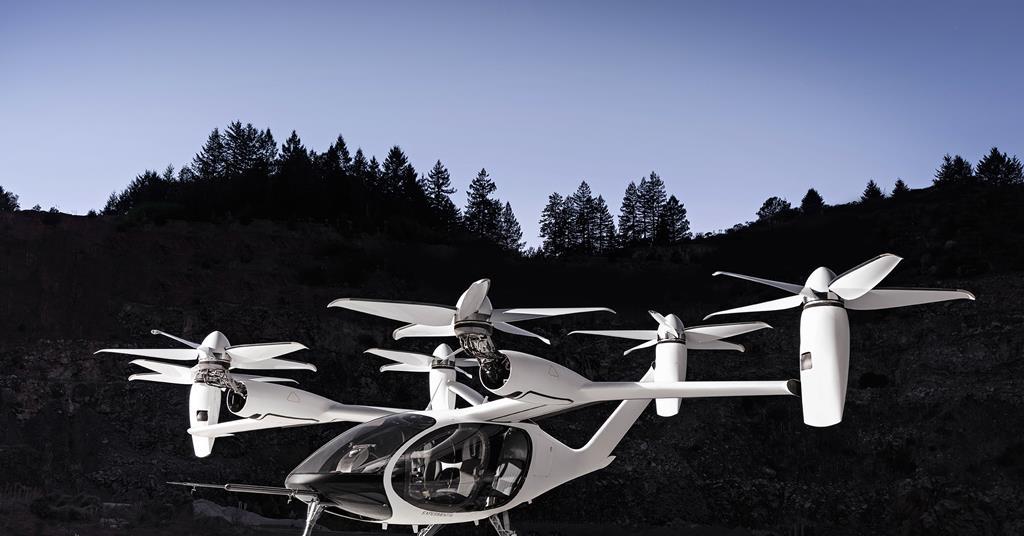
eVTOL services will ‘democratise’ travel: Joby
Urban air mobility (UAM) services promise to "democratise" intra-city travel thanks to operating costs which are a "small fraction" of those of a helicopter, a leading developer claims.
So Joby think pricing themselves at the same level as Uber's premium Uber Black will 'democratize' travel. Hmmmm.
"That will be possible thanks to the low operating and maintenance costs of electric air vehicles"
I really get the feeling a lot of these companies think they can get away without using licensed mechanics.
- Joined
- 9 October 2009
- Messages
- 21,976
- Reaction score
- 13,636
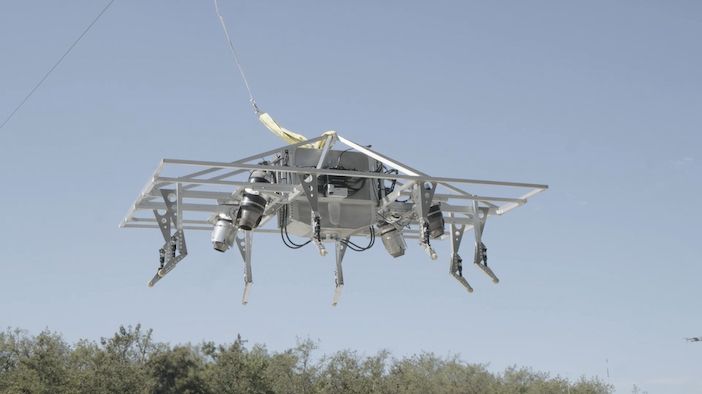
JetPack Aviation's VTOL Speeder prototype passes first round of flight testing | Aerospace Testing International
JetPack Aviation's Speeder prototype VTOL passes flight tests before with untethered tests planned this summer
 www.aerospacetestinginternational.com
www.aerospacetestinginternational.com
JetPack Aviation is initially targeting the special missions market, for example the emergency medical services (EMS). The Speeder will offer a maximum speed of 150mph (240km/h) at an altitude of up to 15,000ft, have a flight time of up to 30 minutes and be capable of producing a maximum thrust of 1,200 lbs.
The company is also considering the urban air mobility market for longer term applications. JetPack Aviation has already begun readying letters of intent for customers and taking pre-orders for the aircraft, it said.
shin_getter
ACCESS: Top Secret
- Joined
- 1 June 2019
- Messages
- 1,109
- Reaction score
- 1,492
Not sure where this goes, but interesting development that deserve some discussion:


 english.elpais.com
english.elpais.com
edit: discussions in other forums identify this as
https://www.muginuav.com/product/mugin-6000mm-extra-large-huge-vtol-uav-platform/
with 25kg payload.
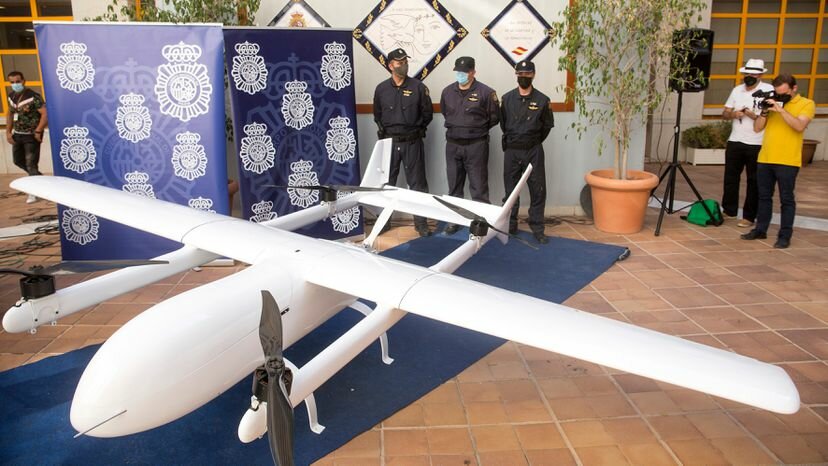

Spanish police seize large drone used to carry drugs from Morocco
The aircraft, which has a wingspan of 4.5 meters and seven hours of flight autonomy, was able to fly up to 150 kilos of narcotics between the coast of North Africa and southern Spain
The aircraft, which has a wingspan of 4.5 meters and seven hours of flight autonomy, was able to fly up to 150 kilos of narcotics between the coast of North Africa and southern Spain
The drone has the capability to fly for up to seven hours at a maximum speed of 170km/h....
Built in China and with a cost of anywhere between €30,000 and €150,000, depending on its technical characteristics, the drone has five motors. Four of them are electric and allow the aircraft to land and take off vertically. The fifth, a two-cylinder combustion engine, allows for horizontal flight.
The drone can reach altitudes of 2,000 meters (around 7,000 feet), but in general would fly much lower in order to save fuel and avoid detection...
The drug gang was flying the drone using an electronic system that relayed the exact takeoff and landing points, and used waypoints – i.e. places during the flight where it had to change course. It could also be flown using remote control. The police reported, however, that the criminals did not have much training or knowledge for its use. This fact, combined with the large size of the aircraft, meant it posed a considerable danger to other air traffic – even for passenger planes.
The drone can be dismantled to facilitate its transport, and was located by the authorities in a house being used as a storage location for narcotics outside Almáchar in the Axarquía area.
edit: discussions in other forums identify this as
https://www.muginuav.com/product/mugin-6000mm-extra-large-huge-vtol-uav-platform/
with 25kg payload.
Last edited:
- Joined
- 11 February 2010
- Messages
- 1,650
- Reaction score
- 2,702
Holy.. a NarcoDrone
- Joined
- 9 October 2009
- Messages
- 21,976
- Reaction score
- 13,636
Indeed.
- Joined
- 4 May 2008
- Messages
- 2,439
- Reaction score
- 762
Well, I wouldn't want to be the designer who has to explain to a drug lord why his millions of dollars-worth of cocaine are currently not accounted for... i think that makes the designer highly motivated to succeed!And it's the most sensibly designed vtol drone in the entire thread.
- Joined
- 11 February 2007
- Messages
- 2,569
- Reaction score
- 4,382
US court denies Wisk’s request for injunction against Archer https://www.flightglobal.com/busine...-for-injunction-against-archer/144740.article
“In essence, Wisk has not shown a likelihood of success on the merits that defendant Archer Aviation Inc. has misappropriated its particular asserted trade secrets,” the court said in a one-page ruling on 22 July.
“There are some arguable indications of misappropriation but, even if the totality of that evidence raises ‘serious questions going to the merits,’ it is too uncertain and equivocal to support a finding of irreparable injury based on misappropriation or that the balance of hardships sharply favours Wisk,”
“In essence, Wisk has not shown a likelihood of success on the merits that defendant Archer Aviation Inc. has misappropriated its particular asserted trade secrets,” the court said in a one-page ruling on 22 July.
“There are some arguable indications of misappropriation but, even if the totality of that evidence raises ‘serious questions going to the merits,’ it is too uncertain and equivocal to support a finding of irreparable injury based on misappropriation or that the balance of hardships sharply favours Wisk,”
alberchico
I really should change my personal text
- Joined
- 14 January 2014
- Messages
- 707
- Reaction score
- 1,513
This channel follows the EVTOL market closely and is worth following if you want in-depth technical analysis of the various aspects of electric flight. What shocked me is that about 15:30 minutes into the video, they reveal that there are currently a whopping 484 different projects in development worldwide !!! I wonder how many of these projects will manage to cross the finish line.
- Joined
- 4 July 2010
- Messages
- 2,515
- Reaction score
- 3,094
Similar threads
-
Russia is working on a VTOL Fighter for the 21st Century
- Started by philipp7
- Replies: 4
-
-
-
Japanese 2050 Space Elevator project (Obayashi Corporation)
- Started by Grey Havoc
- Replies: 127
-
Powerpoint engineering and the downfall of quality
- Started by Orionblamblam
- Replies: 61

